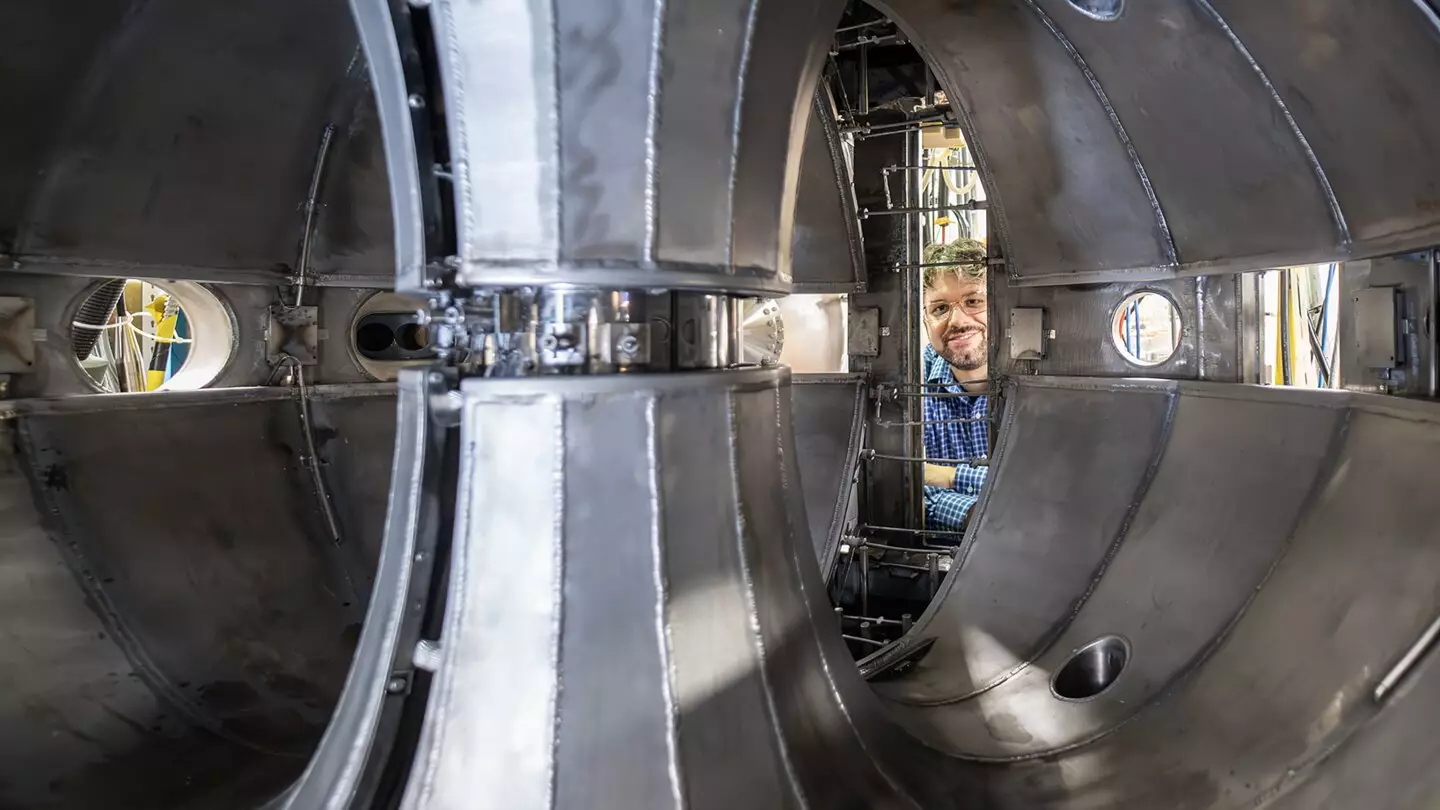Emerging research conducted at the Department of Energy’s Princeton Plasma Physics Laboratory (PPPL) suggests that the utilization of liquid lithium on the internal walls of plasma confinement devices could facilitate the fusion process and make it more practical and cost-effective. These findings were presented by Dennis Boyle, a staff research physicist at PPPL, and recently published in the journal Nuclear Materials and Energy. By applying a coating of liquid lithium to the inside of the walls of a tokamak, a device that uses magnetic fields to confine plasma, the researchers were able to maintain a hot edge of the plasma, which is crucial for achieving efficient fusion energy.
Enhancing Energy Confinement
The goal of plasma confinement devices like tokamaks is to confine the energy within the plasma to ensure more efficient fusion reactions. Improved energy confinement would allow for smaller and less expensive machines, which could significantly contribute to the viability of fusion energy as a cleaner alternative to fossil fuels. The recent experiments conducted at PPPL with the Lithium Tokamak Experiment-Beta (LTX-β) demonstrated that a liquid lithium coating can enhance plasma performance. Unlike past experiments with solid lithium coatings, liquid lithium proved to be more suitable for large-scale tokamaks, offering promising results for future fusion power plant designs.
One of the main challenges in developing fusion energy is building a viable wall that can withstand the extreme heat of the plasma. The liquid lithium used in the experiments at PPPL has shown potential as a protective shield for the inner walls of the tokamak, reducing the need for repairs. Additionally, the liquid lithium absorbs a significant portion of the hydrogen ions escaping from the plasma, creating a low-recycling environment. This environment prevents the cooling of the plasma edge and allows for a more uniform temperature profile throughout the plasma, enhancing heat confinement.
Increase in Plasma Density
The researchers observed that the introduction of high-energy neutral particles through a neutral beam resulted in an increase in plasma density when using liquid lithium. This increase was significantly larger compared to the use of solid lithium. The key difference was attributed to a small amount of evaporated lithium impurity from the liquid walls that entered the plasma. This lithium impurity altered the dynamics of charge exchange, enabling the plasma to retain the added hydrogen ions without displacing existing hydrogen ions. As a result, an overall increase in plasma density was achieved, further improving the performance of the fusion reactions.
While the application of liquid lithium walls in larger tokamaks presents challenges in terms of cost and implementation, smaller-scale exploratory experiments, like LTX-β, are crucial for advancing fusion energy research. The experiments conducted at PPPL have shown significant promise in terms of energy confinement and plasma performance. By further optimizing the use of liquid lithium and understanding its impact on plasma dynamics, scientists aim to bridge the gaps in bringing fusion energy to the power grid. The findings from the LTX-β experiments lay the foundation for future research and development in fusion energy technologies.
The recent research at PPPL reveals the potential of liquid lithium as a game-changer in the field of fusion energy. By applying liquid lithium to the internal walls of plasma confinement devices, scientists have achieved better energy confinement, increased plasma density, and improved performance of fusion reactions. These findings pave the way for more cost-effective and practical fusion power plants, offering a cleaner alternative to fossil fuels. While challenges remain in implementing liquid lithium walls on a larger scale, the ongoing research and exploratory experiments are crucial for pushing the boundaries of fusion energy and finding solutions to the world’s energy needs.


Leave a Reply